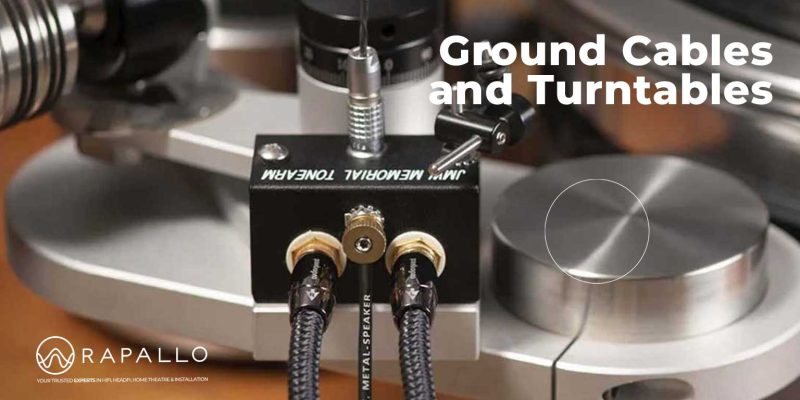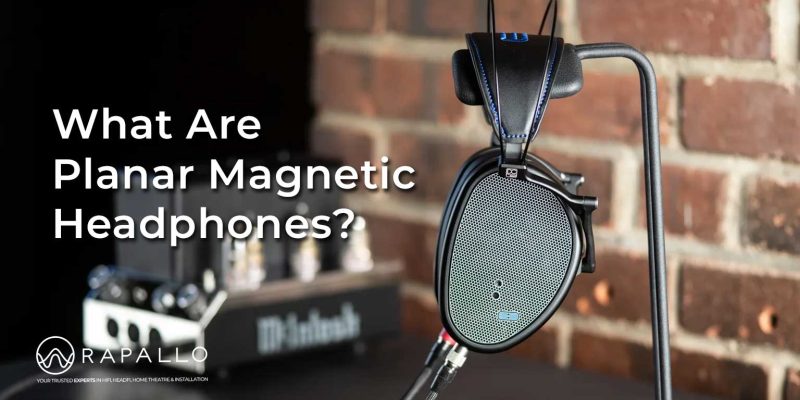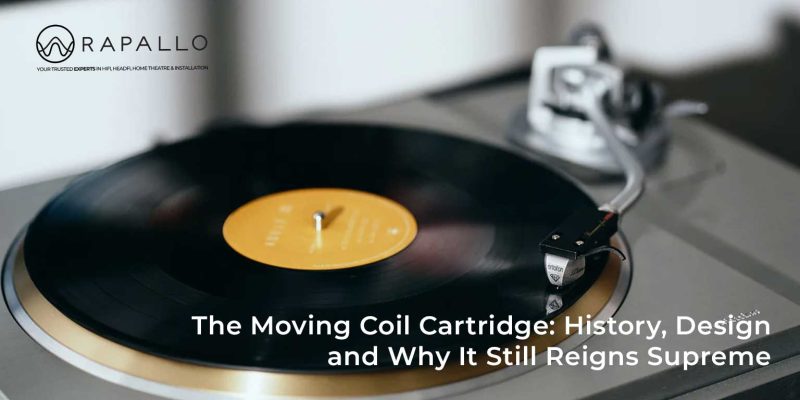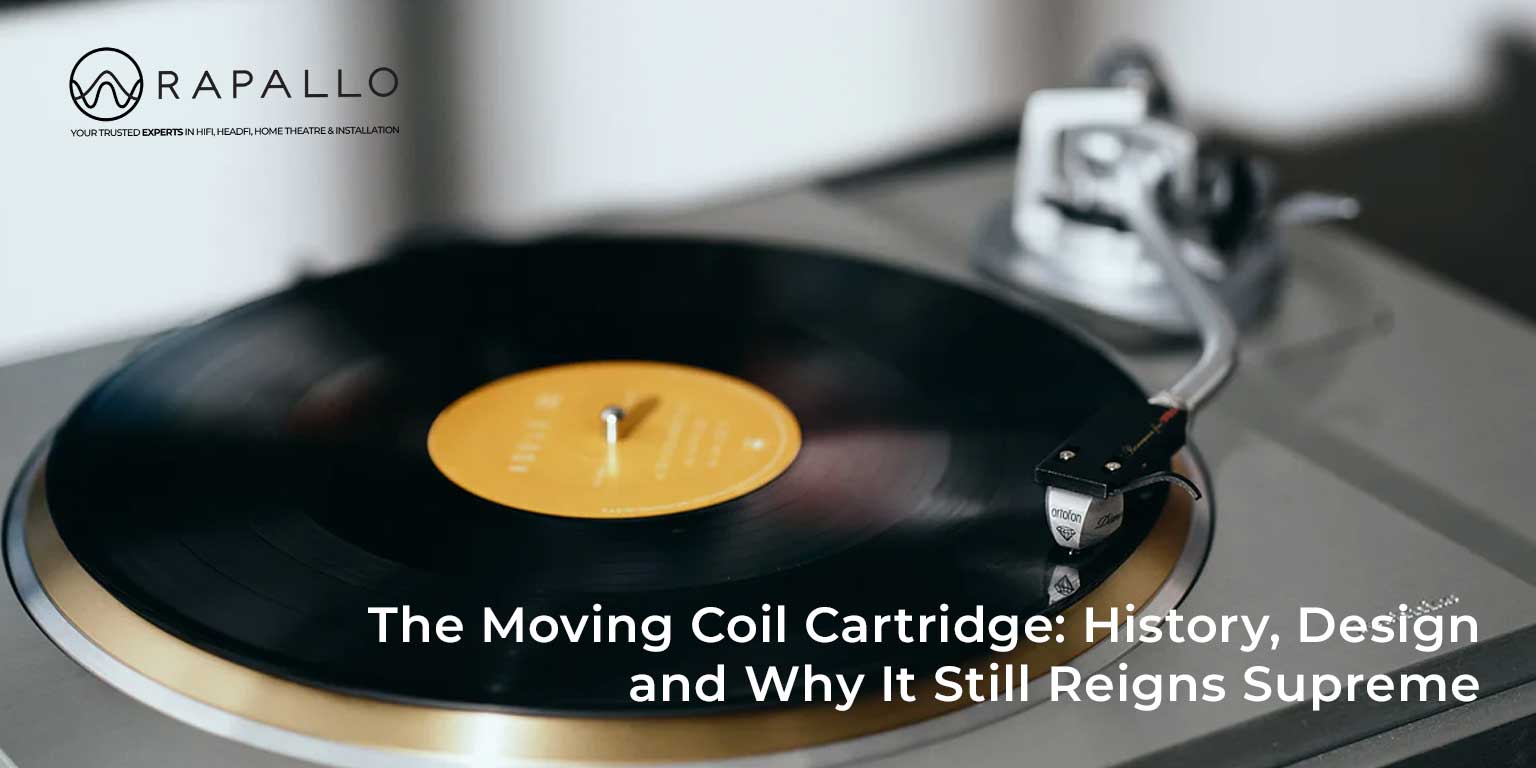
The Moving Coil Cartridge: History, Design, and Why It Still Reigns Supreme
Estimated reading time: 7 minutes
Vinyl playback is a ritual. From lifting the record out of its sleeve, to lowering the stylus onto the spinning grooves, every step is part of the magic. At the heart of this experience sits the phono cartridge, the tiny but vital component that transforms microscopic groove modulations into music. Among cartridge types, one design has earned legendary status with audiophiles for its accuracy, detail, and musicality: the Moving Coil (MC) cartridge.
In this Rapallo tech article, we’ll explore the history of the MC cartridge, how its design differs from alternatives, and why it remains a top choice for those serious about vinyl playback.

A Brief History of the Moving Coil Cartridge
The principle of the moving coil transducer dates back to the early 20th century. In fact, the same fundamental idea—moving a coil through a magnetic field to generate a tiny electrical current—is used in microphones and loudspeakers.
In the early days of hi-fi, phono cartridges were primarily Moving Magnet (MM) or Moving Iron (MI) designs, which were practical and relatively easy to produce. But as the hi-fi industry boomed in the 1950s and 60s, engineers began looking for ways to push beyond the limitations of these designs, particularly when it came to tracking accuracy and high-frequency detail.
Enter the Moving Coil cartridge. By minimising the moving mass of the stylus and cantilever assembly, MC cartridges delivered a new level of agility and precision. Pioneering brands in the 1970s and 80s refined the design further, experimenting with coil geometry, magnetic materials, and stylus profiles. The result was a sound characterised by openness, speed, and micro-detail that captured the imagination of serious vinyl lovers.
Today, the MC cartridge remains a cornerstone of high-end analogue playback, with models ranging from accessible entry-level designs to expensive, hand-built masterpieces.
How the Moving Coil Cartridge Works
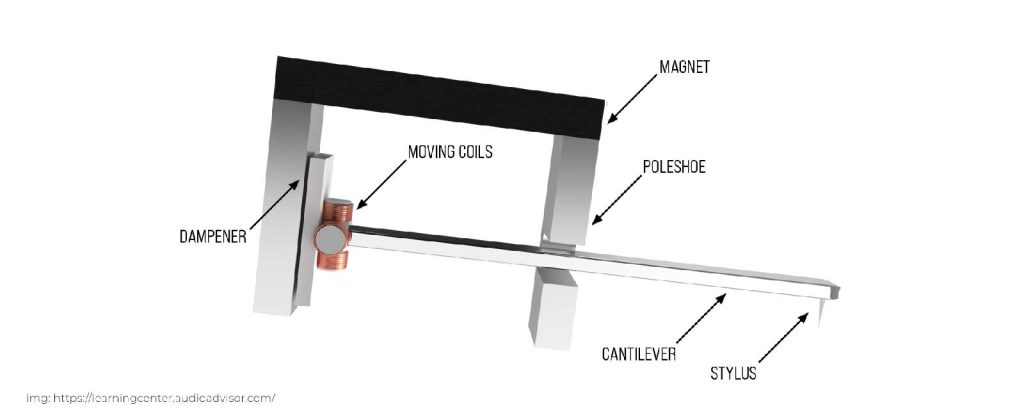
To appreciate the advantages of the MC design, it helps to understand the basics of how it functions.
A cartridge consists of a stylus, cantilever, coils, magnets, and a suspension system. As the stylus rides the record groove, it vibrates in response to the groove’s undulations. Those vibrations travel through the cantilever, which moves either a magnet (in MM designs) or coils (in MC designs).
- Moving Magnet (MM): The magnet moves relative to fixed coils, generating voltage.
- Moving Coil (MC): The coils move relative to a fixed magnet.
Because the coils are incredibly light compared to magnets, MC cartridges reduce the mass that needs to be moved by the stylus. This lower moving mass means the stylus can respond more quickly and accurately to the groove, especially during complex musical passages.
The result? Improved transient response, greater detail, and more natural reproduction of music.
Key Design Features of MC Cartridges
1. Stylus Profiles
The shape of the stylus directly affects how well it can track groove modulations. Common types include:
- Elliptical: Reliable and cost-effective, but not as detailed at the inner grooves.
- Shibata, Line Contact, MicroRidge, Fritz Gyger: Advanced shapes that make more contact with the groove walls, retrieving fine details and spreading wear over a larger area.
2. Cantilever Materials
The cantilever acts like a bridge between stylus and coils. Materials matter:
- Aluminium: Affordable, lightweight, widely used.
- Boron: Stiffer and lighter, offering improved accuracy.
- Sapphire/Ruby: Extremely rigid, producing exceptional clarity.
- Composite/Carbon fibre: Tunable for resonance control.
3. Coil Winding & Output
- High-Output MC (HOMC): More coil windings generate higher output (1.5–2.5 mV), allowing use with standard MM phono inputs, but with a slight trade-off in moving mass.
- Low-Output MC (LOMC): Fewer coil windings reduce mass and improve performance, but output is very low (0.2–0.6 mV). Requires specialised high-gain phono stages or step-up transformers.
4. Magnet Systems
Strong, stable magnetic fields are crucial for accuracy. Many MCs use advanced magnets like neodymium, paired with carefully shaped pole pieces to maximise linearity and minimise distortion.
5. Compliance & Tonearm Matching
Compliance (the suspension’s flexibility) must match the tonearm’s effective mass to avoid resonance issues. This ensures stability, minimises distortion, and prevents record wear.
MC vs MM: The Sonic Differences
The real test is how they sound. Here’s how enthusiasts often describe the two designs using audio language or descriptions:

Moving Coil (MC)
- Subtle micro-detail retrieval
- Airy and spacious presentation
- Pinpoint imaging and soundstage depth
- Fast, precise transients

Moving Magnet (MM)
- Better value at entry-level price points
- Full-bodied and dynamic
- High output, easy to pair with gear
- Replaceable stylus assemblies for convenience
While excellent MMs exist, MC cartridges are often chosen when the listener values ultimate refinement and the most lifelike presentation of music.
Advantages of Moving Coil Cartridges
- Lower Moving Mass – the absence of a heavy magnet on the cantilever gives the stylus freedom to move quickly and accurately, producing cleaner transients and finer detail.
- Greater Resolution – an MC cartridge can reveal subtle musical information—like hall ambience, delicate reverb trails, or the softest brush strokes on a snare—that MMs may gloss over.
- Superior Stereo Imaging – well-designed MCs offer exceptional channel separation, producing a soundstage with precise instrument placement and natural depth.
- Advanced Stylus Life – many MCs use sophisticated stylus profiles that spread wear across a larger groove area, reducing distortion and potentially extending both stylus and record life.
The Trade-Offs with the Moving Coil Cartridge
Of course, MC cartridges come with considerations:
- Low Output: Most LOMC designs need either a dedicated high-gain phono stage or a step-up transformer.
- Cost & Maintenance: MCs are generally more expensive than MMs, and their styli are not user-replaceable. Retipping or replacing requires professional service.
- Setup Sensitivity: Advanced stylus shapes demand precise alignment to perform optimally.
Yet for many, these are small sacrifices for the performance gains on offer.
Step-Up Transformers and Phono Stages
Because most MCs output such low voltage, they require careful amplification. Two solutions exist:
- Step-Up Transformer (SUT): A passive device that increases the signal voltage before it reaches an MM phono stage. When correctly matched, SUTs offer superb noise performance and musicality.
- Dedicated MC Phono Stage: Provides active gain and often offers adjustable loading options to fine-tune the cartridge’s sound.
Choosing the right solution depends on your cartridge specifications, budget, and system synergy.
When to Choose a Moving Coil Cartridge
You should consider upgrading to an MC cartridge if:
- You value micro-detail, imaging, and a lifelike sense of space.
- You have a capable phono stage (or are willing to invest in one).
- You want to elevate an already strong vinyl playback system.
However, a high-quality MM cartridge still makes sense if:
- You want user-replaceable styli for convenience.
- You’re working with a more modest budget.
- Your phono stage only supports MM input.
Conclusion – The Moving Coil Cartridge
The Moving Coil cartridge has earned its reputation not by marketing hype but by delivering what vinyl lovers crave: precision, detail, and a breathtakingly natural presentation of music. From its origins in the golden age of hi-fi to today’s refined designs, the MC remains a testament to analogue engineering at its best.
While it requires more care in setup and system matching, the rewards are immense. For the listener who values realism and musical intimacy, an MC cartridge isn’t just an upgrade—it’s an investment in hearing vinyl as it was meant to be heard.
At Rapallo, we can help you select and set up the perfect cartridge for your system. Whether you’re stepping into the world of MC for the first time or seeking a reference-level upgrade, we’ll ensure you unlock every last detail hiding in your record grooves.
- Ground Cables and TurntablesGround Cables and Turntables, time to separate electrical fact from audiophile folklore – at least we will try. Among the…
- What Are Planar Magnetic Headphones?So what are Planar Magnetic Headphones? Here is our guide for curious HeadFi listeners. If you’ve spent any time browsing…
- Open-Back vs Closed-BackAh, headphones and Open-Back vs Closed-Back… Your loyal companions through late-night jam sessions, endless Zoom calls, and those “I’m totally…
- Our Guide to Buying a CD PlayerOur Guide to Buying a CD Player. What to look for in today’s market and why CD Players still matter.…
- The Moving Coil Cartridge: History, Design, and Why It Still Reigns SupremeVinyl playback is a ritual. From lifting the record out of its sleeve, to lowering the stylus onto the spinning…
- How AC Infinity Fans Keep Your AV and Hi-Fi Gear Cool and ProtectedHow AC Infinity Fans Keep Your AV and Hi-Fi Gear Cool. When you invest in a high-performance home theatre or…
